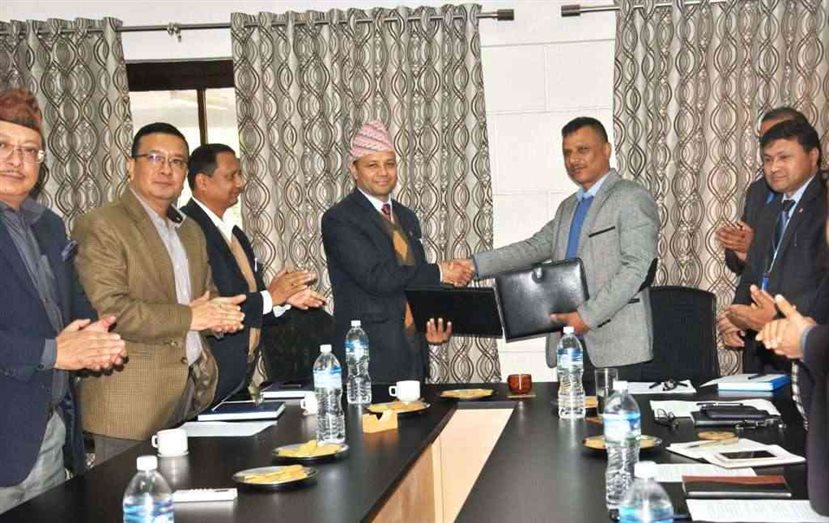10 December, 2019, Kathmandu
Nepal Telecom and the Nepal Telecommunications Authority have reached a mutual agreement to construct an information highway in Karnali and the Far West region of Nepal. Managing Director of Nepal Telecom Dilliram Adhikari and Chairman of the Telecommunications Authority Purushottam Khanal signed the MoU with the intention of installing about 2500 km of optical fiber within two years.
On the occasion, Chairman of NTA, Khanal said that the construction of information highway has been taken forward as the cornerstone of the economic prosperity announced by the government.
At the signing ceremony, Managing Director of Nepal Telecom said that the project is very important not only from the perspective of information and technology but also for the construction of the digital economy, adding that such projects will help bring technical and economic transformation to the country.
The project aims to connect the information highway network with the Karnali and Mid-Mountain Highways of the Far Western region, East-West, North-South as well as postal routes, district headquarters and municipalities. The project, which will be constructed by Nepal Telecom, will expand the network from Musikot in Rukum to Jhulaghat in Baitadi. In addition,including those two provinces the optical fiber network will be expanded to 20 districts including Banke and Bardiya.
Under this project, an optical fiber network of at least 96 cores will be extended to mid-highway, east-west highway and postal highway, and to a minimum of 48 and 24 cores respectively at district headquarters and municipalities.
In addition to this, capacity of up to 400 Gigabits per second as well as a core router with a capacity of 100 Gigabit per second and a port of 10 Gigabit per second or a combination of both will be used. In this optical fiber network, DWDM will be used at around 26 places and routers in 52 places.
The agreement states that a final conclusion can be reached within one month after a detailed study.
